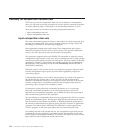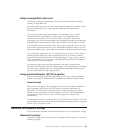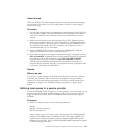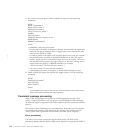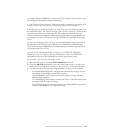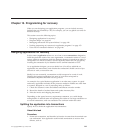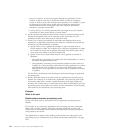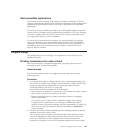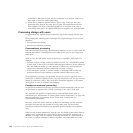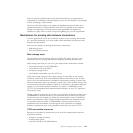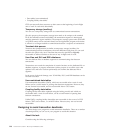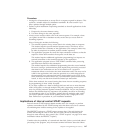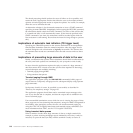v Progress transaction, to check on progress through the application. Such a
function could be used after a transaction failure or after an emergency
restart, as well as at any time during normal operation. For example, it could
be designed to find the correct restart point at which the terminal user
should recommence the interrupted work. This would be particularly
relevant in a pseudo-conversation.
v Catch-up function, for entering data that the user might have been forced to
accumulate by other means during a system failure.
2. Specify the files and databases that can be accessed in each processing unit. Of
the files and databases that can be accessed, specify those that are to be
updated as distinct from those that are only to be read.
3. Specify how to apply the updates for those files and databases that can be
updated by an application processing unit. Factors to consider here include the
consistency and the immediacy of updates.
a. Specify which, if any, updates must happen in step with each other to
ensure integrity of data. For example, in an order-entry application, it might
be necessary to ensure that a quantity subtracted from the inventory file is,
at the same time, added to the to-be-shipped file.
b. Specify when newly entered data must or can be applied to the files or
databases:
v The application processing unit updates the files and databases as soon as
the data is accepted from the user.
v The application processing unit accumulates updates for later action; for
example, by a later processing unit within the same application or a batch
application that runs overnight. If you choose the batch option, make
sure that there is enough time for the batch work to complete the number
of updates.
Use the above information when deciding on the internal design of application
processing units.
4. Specify what data needs to be passed from one application processing unit to
another. For example, in an order-entry application, one processing unit might
accumulate order items. Another separate processing unit might update the
inventory file. Clearly, there is a need here for the data accumulated by the first
processing unit to be passed to the second. Use this information when deciding
what resources are required by each processing unit.
Example
What to do next
Relationships between processing units
Specify what data needs to be passed from one application processing unit to
another.
For example, in an order-entry application, one processing unit may accumulate
order items. Another, separate, processing unit may update the inventory file.
Clearly, there is a need here for the data accumulated by the first processing unit
to be passed to the second.
This information is needed when deciding what resources are required by each
processing unit (see “Mechanisms for passing data between transactions” on page
145).
142 CICS TS for z/OS 4.1: Recovery and Restart Guide



